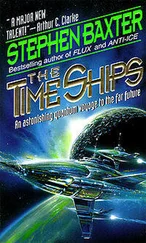Is it really plausible that a bunch of trees could be connected up into a network with anything like the “functionality” of a brain? And even if you believe a forest can become a brain, how smart can it possibly be?
Let’s start with Grace’s numbers.
Grace says that each tree on Pandora has “ten to the fourth” connections to the trees around it, and there are “ten to the twelfth” trees on the moon. This, she says, adds up to a global neural network with more connections than the human brain.
Can there really be “ten to the twelfth” trees on Pandora? Ten to the twelfth power means ten multiplied by itself twelve times, a number you’d write down as one followed by twelve zeros, with commas scattered according to taste: 1,000,000,000,000. That’s a million million—a trillion . By comparison, how many trees are there on Earth? In 2008 Nalini Nadkarni of Evergreen State College in Washington published an estimate, based on NASA orbital images of forest coverage. Her number was absurdly precise: 400,246,300,201—four hundred billion, or around sixty trees for every person on the planet. That’s about half of Grace’s estimate for Pandora. And given that much of Earth has been deforested by us humans in the last few thousand years, that’s close enough for me to accept Grace’s number as plausible, even though Pandora is smaller than Earth. Meanwhile the human brain is believed to contain around a hundred billion neurons—that’s ten to the power of eleven in Grace-speak. That’s a factor of ten less than Grace claims for Pandora’s tree number. As regards connections, on average a brain neuron has about a thousand connections to neighbouring neurons: that’s ten to the third, again a factor of ten less than Grace claims for the trees.
So your brain amounts to a total network of around a hundred trillion connections (a hundred billion times a thousand). And on that count, Grace is right that the network on Pandora is indeed bigger than the human brain, by a factor of about a hundred.
How does this compare to modern computers? Each neural connection in your brain can support about two hundred “calculations” per second. So that’s a total of twenty thousand trillion calculations per second, going on in your head, right now. (Granted it may not always feel like it.) That is, in the information technology terms I used in Chapter 19, the brain is capable of twenty petaflops. As we saw in Chapter 19, as of 2010 the most powerful non-distributed computer system in the world, the Chinese “Milky Way,” was capable of 2.5 petaflops—an eighth of the processing speed of the human brain, or about a thousandth the power of Eywa.
That sounds impressive, but you’ll recall from Moore’s Law ( Chapter 19) that computing speeds and capacities are multiplying rapidly, doubling every fourteen months according to the TOP500 study. If this goes on, the fastest computer will pass the brain for sheer speed in just four more years—and it will pass the more powerful Eywa in a mere dozen years.
Or will it?
Grace’s estimate of Eywa’s complexity is based on a count just of the physical neural network of trees and their connections. This is quite reasonable from a scientist’s point of view, since it is all that Grace can “sample” and measure. But there is more to the complexity of any computer than a simple count of the links between its components.
One possibility is that the trees themselves are more than simple switches; perhaps they contain some internal processing too—which would up Eywa’s total processing power significantly. There is in fact a theory that the neurons in our brains are similarly more than simple on-off switches. Cambridge biologist Brian J. Ford is developing holistic theories about cells, which are complex organisms in their own right, and are capable of remarkably complex individual behaviours. Amoebas, for example, single-celled organisms, can build glassy shells by picking up sand grains from the mud. The cells of our bodies can perform similarly complex acts in support of body functions. Why, then, asks Ford, should we not expect that some kind of processing goes on within neurons, brain cells, themselves? Even the details of their output firings seem to include delays, nonlinear responses and other subtleties. “My hunch,” says Ford, “is that the brain’s power will turn out to derive from data processing within the neuron rather than activity between neurons.”
And what about connections beyond the intertwining of trees roots? The woodsprites are “the seeds of the sacred tree.” When they settle on avatar-Jake, during his first encounter with Neytiri, the Na’vi girl takes it as a sign from Eywa of great significance. But we see no physical connection between the trees and the woodsprites, no obvious neural links—and nor, indeed, have we any hint of how Eywa can predict Jake’s future. And later during the SecOps attack, the animals of Pandora, the viperwolves, banshees, hammerheads and thanators, join in the fightback. This is another expression of the will of Eywa, but again we see no evidence of a simple physical connection between trees and animals. In another odd incident, Mo’at, as tsahik , the shaman, presumably the closest of all the Na’vi to Eywa, tastes Jake’s blood on first encountering him. Is she sampling some kind of biochemical data to transfer to Eywa?
There’s clearly much to Eywa that isn’t obvious. But we do witness one remarkable expansion of Eywa’s apparent power beyond the limit of the core forest infrastructure.
In the Tree of Souls, when Grace and Jake are being taken into the Eye of Eywa to be transferred to their avatar bodies, the Na’vi of the Omaticaya clan all plug their queues into a glowing, dispersed root mass in the ground. The clan evidently becomes a kind of internet of the mind, with distributed computing going on in the “PCs” of the Na’vi brains in addition to the “mainframe” processor of the tree network.
Such networks can be extraordinarily powerful. According to an estimate published by Wired Magazine in June 2008, the billion PCs that are today connected by the Internet—along with smart phones, tablets and a host of other devices—amount to a single computer with a power equivalent to twelve thousand petaflops. That’s thousands of times the power of that top-end Chinese machine. A project called SETI@Home is an example of how this distributed power can be used. SETI searches of radioastronomy data for signals from extraterrestrial intelligences can be very hungry for computing power; there is a lot of sky to search and a lot of radio frequencies to listen on. Since the 1990s the task of sifting through the tremendous volumes of raw data has been parcelled out to a network of volunteers’ PCs, each of which contributes a fraction of its total power to the SETI quest. It’s an attractive project that offers you the chance of being the one to make first contact, at home…
To some extent a physical networking as in the Tree of Souls scenes is the ultimate expression of the Na’vi’s close sociability with each other—yet it’s much more than that. How must this linking feel? What would it be like , to be part of an internet of the mind?
A group mind might be a new layer of processing, superimposed on top of the central nervous systems of each of its members, passing information in a different, faster way. It would be a growth of consciousness, perhaps like the mind-expanding feeling you get when solving a puzzle, or finding the right strategy in a chess game—or when a scientist sees her hypothesis confirmed by a bit of new evidence, and the world makes a little more sense than it did before. Joined in Eywa, you would no longer be alone. You would share thoughts, feelings, memories. What would it matter if some of those memories were now stored outside your own skull?
Читать дальше










